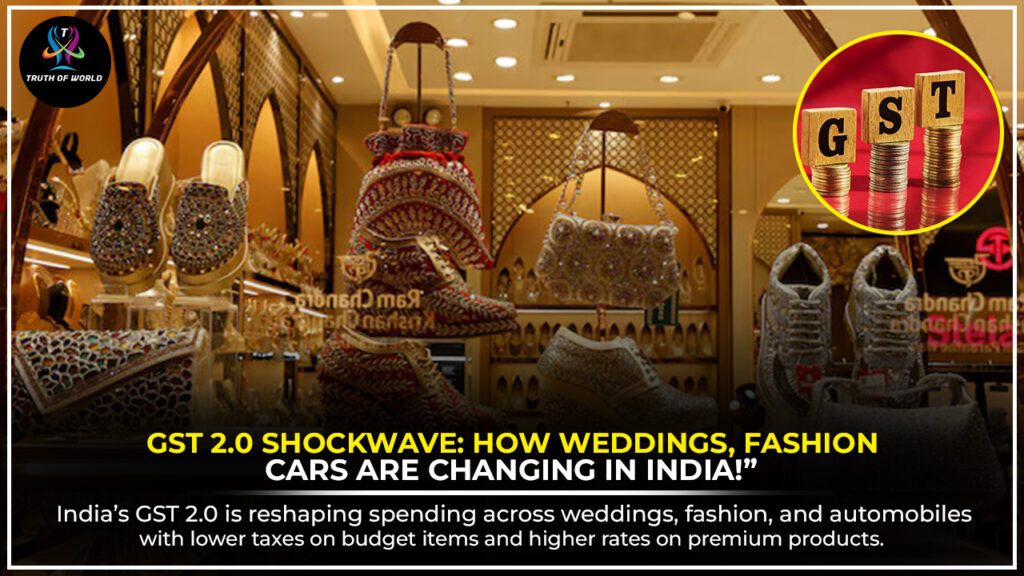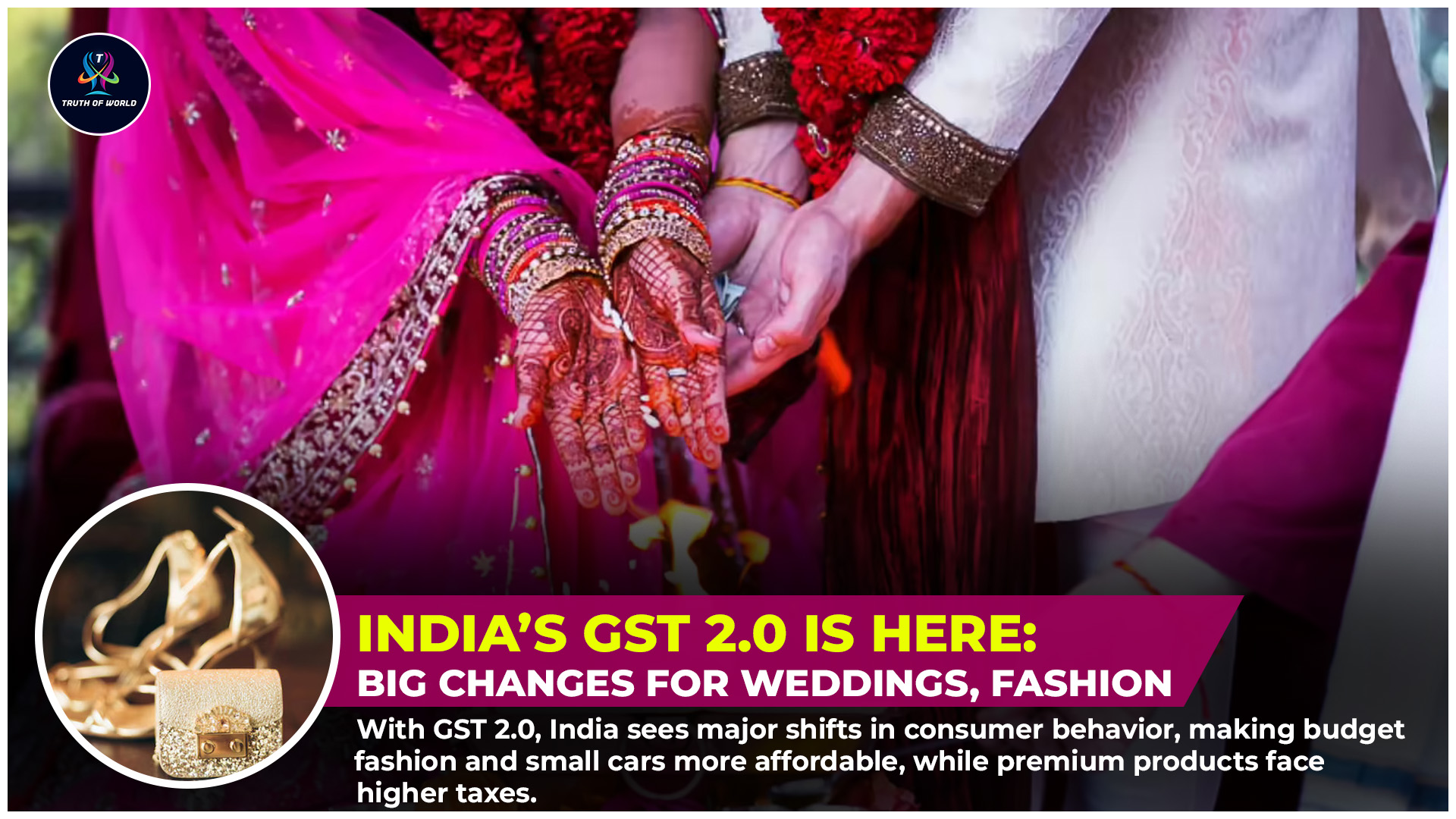New Delhi, September 10, 2025 – India’s government has introduced significant changes under GST 2.0, effective from September 22, 2025. This overhaul is reshaping spending patterns across weddings, fashion, and the automobile industry, influencing consumer budgets and brand strategies alike.
Weddings: How GST 2.0 Impacts Big Celebrations
Weddings in India are major social events with huge budgets. Under GST 2.0, clothing priced under ₹2,500 now attracts only 5% GST, down from the previous 12%. This gives budget fashion brands an advantage. For example, Raymond announced price reductions on clothing under ₹2,500 to benefit consumers.
However, items above ₹2,500 will now be taxed at 18%, up from 12%, impacting premium brands like Zara, Levi’s, and Lacoste. This increase may affect their sales and customer spending patterns.
Fashion Industry: Brand Strategies Adjust
GST 2.0 is causing a ripple effect in the fashion sector. Local budget brands benefit from lower taxes on affordable clothing, while international premium brands face higher GST, potentially affecting demand.
Raymond is leveraging this to attract more middle-class buyers, whereas Zara, Levi’s, and Lacoste may need to adjust marketing strategies and pricing to maintain sales in India.
Automobile Industry: Significant Price Cuts
GST 2.0 reduces GST rates on small cars from 28% to 18%, leading to substantial price reductions. Leading brands like Maruti Suzuki, Tata Motors, Hyundai, Toyota, Skoda, and Renault have announced price cuts ranging from ₹65,000 to ₹8.9 lakh.

Skoda, for instance, cut Kodiaq prices by ₹5.8 lakh, while luxury brands like Mercedes-Benz and BMW reduced prices between ₹2.6 lakh and ₹11 lakh, making premium cars slightly more accessible.
Impact on Consumers
The tax changes are reshaping consumer spending. Lower GST on budget items reduces the cost for middle-class buyers, while higher GST on premium goods increases prices, forcing buyers to reconsider purchasing decisions. Wedding expenses, fashion choices, and car purchases are all being influenced.
Future Outlook: Stability and Strategy
Businesses must adapt to GST 2.0 for long-term stability. Wedding planners, fashion brands, and car manufacturers need to realign strategies according to these changes. Consumer preferences and spending habits will continue to evolve, influencing marketing and product offerings.
GST 2.0 has triggered a significant shift in India’s weddings, fashion, and automobile sectors. Consumers will find more affordable options in budget segments while premium goods may become costlier. Brands will need to recalibrate strategies to maintain competitiveness, making this GST overhaul both a challenge and an opportunity.









